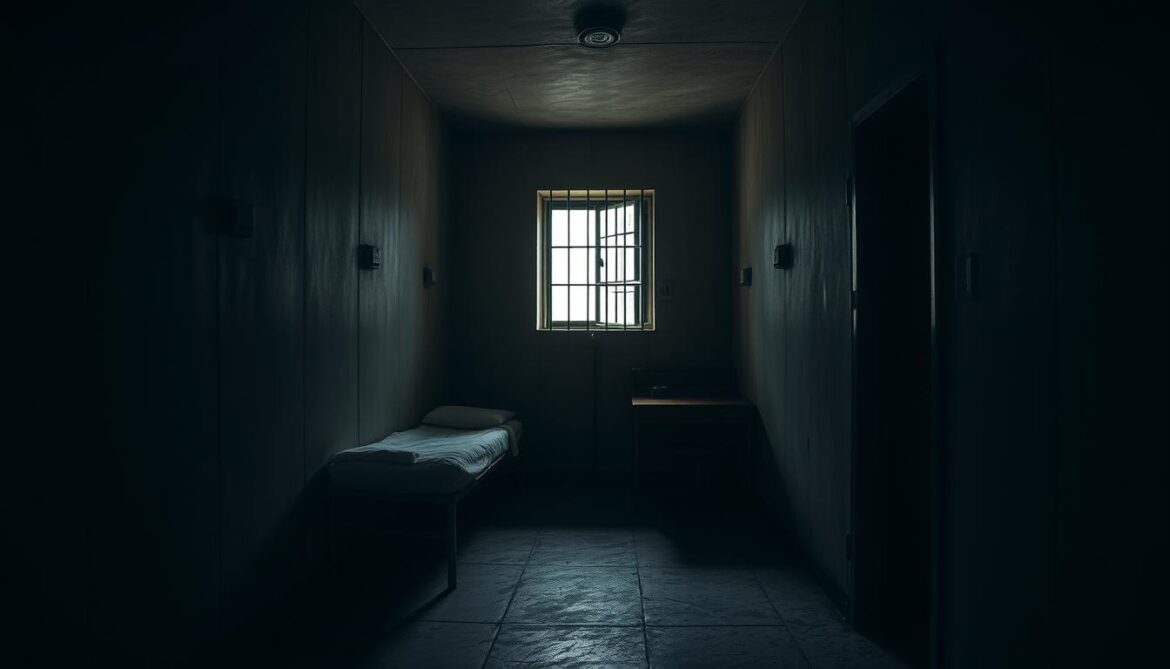Did you know that over 99% of individuals serving life sentences eventually become eligible for parole? Yet they remain legally supervised until death, even if released. This unique approach defines how serious offences are addressed here, blending accountability with structured reintegration.
If convicted of a severe crime, your sentence involves more than physical confinement. The justice system imposes permanent legal oversight, requiring compliance with strict parole terms decades after leaving prison. This could include mandatory check-ins, travel restrictions, or therapy sessions.
Canada’s framework prioritizes rehabilitation without minimizing consequences. Programs focus on addressing behavioural patterns while preparing for potential community reintegration. However, freedom after release remains conditional—a single violation can result in immediate return to custody.
Your understanding of this process matters. From employment prospects to housing eligibility, every aspect of your future hinges on adherence to parole conditions. The system aims to protect society while offering pathways for personal growth, but the stakes stay high long after prison walls fade from view.
The Canadian Prison Landscape
Correctional Service Canada operates 43 institutions, each following standardized operational frameworks. Your journey through this system depends on sentence length and jurisdiction. Federal facilities handle terms over two years, while provincial jails manage shorter sentences.

Overview of the Prison System in Canada
You’ll encounter distinct approaches based on facility type. Federal institutions prioritize rehabilitation through education and job training. Provincial jails focus on temporary containment and basic programming. Both levels operate under strict legal guidelines to protect rights while enforcing consequences.
| Jurisdiction | Sentence Length | Key Focus | Program Access |
|---|---|---|---|
| Federal | 2+ years | Long-term rehabilitation | Vocational training, therapy |
| Provincial | Under 2 years | Short-term security | Basic education, counseling |
Historical Context and Reforms
The system has shifted from punitive models to evidence-based practices since the 1970s. Key legal changes now require risk assessments before parole hearings. Recent updates mandate cultural sensitivity training for staff and expanded mental health support.
You’ll navigate rules shaped by ongoing debates about public safety. While rehabilitation programs have doubled since 2000, strict monitoring ensures accountability. These balances define Canada’s approach to corrections today.
Understanding life in prison in canada
Canada’s justice system demands permanent accountability for violent acts through distinct sentencing structures. 
What a Life Sentence Entails
If convicted of murder, you’ll face a permanent legal status requiring lifelong correctional oversight. While parole eligibility exists after serving minimum periods, freedom remains conditional. A Federal Court ruling states:
“Life imprisonment represents society’s enduring commitment to justice, not merely temporary confinement.”
This means even if released, you must report to parole officers indefinitely. Violating conditions like travel restrictions or therapy mandates could result in immediate reincarceration.
Mandatory Minimums for Serious Offences
First-degree murder convictions guarantee 25 years without parole consideration. Second-degree murder sentences allow judges to set parole bars between 10-25 years based on case details. Consider these key differences:
| Offence Type | Minimum Parole Wait | Judicial Flexibility | Post-Release Supervision |
|---|---|---|---|
| First-Degree | 25 years | None | Lifetime |
| Second-Degree | 10-25 years | Court discretion | Lifetime |
These mandatory terms ensure consistent punishment nationwide. Rehabilitation programs exist, but release depends on behaviour assessments and public safety evaluations. Your actions during incarceration directly impact future opportunities.
Remember: Parole boards prioritize victim impact statements when reviewing applications. Meeting minimum requirements doesn’t guarantee freedom – it merely opens the review process.
Daily Life and Routines Behind Bars
Your experience within correctional facilities revolves around strict predictability. Every action follows institutional protocols designed to maintain order while fostering personal accountability.
Structured Daily Schedules and Rules
You’ll wake at 6:30 AM sharp for headcounts before breakfast. Days alternate between work assignments and programmed activities – laundry duty might precede anger management classes. Movement between locations requires explicit staff permission.
Three key elements define your routine:
- Mandatory participation in vocational workshops
- Scheduled outdoor recreation periods
- Evening lockdowns by 9:00 PM
Violating curfew or disrespecting officers reduces privileges like visitation rights. Security cameras monitor common areas 24/7, ensuring rule enforcement remains consistent.
Rehabilitation Programs and Daily Activities
Educational opportunities range from literacy courses to college-level programs. You might train as a welder through industrial partnerships while attending cognitive behavioural therapy sessions. Correctional staff document your progress weekly.
A recent study found inmates completing vocational certifications double their employment prospects post-release. Parole boards scrutinize these records alongside disciplinary reports when assessing readiness for supervised freedom.
Your choices during incarceration shape future outcomes. Engaging with rehabilitation initiatives demonstrates responsibility, while repeated infractions extend time behind bars. The system rewards measurable growth but never forgets past actions.
Parole Eligibility and Supervised Release
Gaining parole eligibility marks a critical phase where rehabilitation meets public safety priorities. 
How the Parole Process Works
You become eligible to apply after completing your minimum period of parole ineligibility. This doesn’t guarantee freedom – the Parole Board of Canada reviews your case through multiple hearings. They assess your institutional conduct, rehabilitation efforts, and potential risk to society.
Only 37.8% of eligible applicants secured release as of 2020. Approval requires proving you’ve addressed root causes of criminal behaviour. A board member states:
“We look for tangible evidence of change, not just time served.”
Conditions and Challenges of Parole
Supervised release comes with strict requirements. You’ll report weekly to a parole officer and need permission for travel or job changes. Social interactions face scrutiny to prevent reoffending.
Three key challenges define post-release life:
- Maintaining employment while attending mandatory therapy sessions
- Navigating public stigma during community reintegration
- Avoiding contact with former associates linked to criminal activity
Violating conditions triggers immediate return to custody. Successful parole demands constant vigilance – your freedom depends on balancing accountability with rebuilt trust.
Legal Considerations and the Role of Criminal Defence
Securing skilled legal representation transforms outcomes in serious criminal cases. Without expert guidance, complex procedures and strict deadlines can derail opportunities for relief. Your choice of counsel directly impacts every phase – from initial charges to potential release strategies.

Importance of Legal Representation
Experienced lawyers decode intricate legal requirements while building defence strategies tailored to your case. They identify procedural errors during trials and gather fresh evidence for appeals. A 2021 study found defendants with specialized counsel achieved 42% better outcomes at parole hearings.
Three critical roles your defence team plays:
- Challenging improper evidence collection methods
- Negotiating plea deals that reduce parole ineligibility periods
- Preparing persuasive arguments for sentence appeals
Navigating Post-Conviction Options
After sentencing, time-sensitive opportunities emerge. Ministerial Review applications demand meticulous documentation of legal errors. The “Faint Hope Clause” requires proving sustained rehabilitation – a process best started 24 months before eligibility.
“Post-conviction relief isn’t about second chances – it’s about demonstrating measurable change through evidence,”
Regular consultation with your legal team ensures you meet evolving standards. They’ll coordinate expert witnesses and track precedent-setting rulings that could benefit your case. Proactive planning with seasoned professionals remains your strongest asset when seeking supervised release.
Sentencing Guidelines and Offence Severity
Courts determine consequences for violent crimes through precise legal frameworks. Your sentence depends on how the justice system categorizes the act and evaluates its details. Two classifications dominate murder cases – each carrying distinct implications for your future.

First-Degree vs. Second-Degree: Key Contrasts
First-degree murder convictions guarantee 25 years without parole eligibility. Judges cannot reduce this period, even with mitigating factors. The law treats planned acts or killings during specific crimes (like kidnapping) as most severe.
Second-degree murder allows flexibility. Judges set parole bars between 10-25 years based on your case’s specifics. Consider this comparison:
| Factor | First-Degree | Second-Degree |
|---|---|---|
| Minimum Parole Wait | 25 years | 10-25 years |
| Planning Evidence | Required | Not required |
| Judicial Flexibility | None | Significant |
How Judges Shape Outcomes
Your sentencing hearing examines multiple elements. Courts review whether victims were vulnerable, if weapons were used, and your criminal history. A Crown prosecutor noted:
“We present aggravating factors like cruelty or gang involvement to justify longer parole ineligibility periods.”
Mitigating circumstances might reduce second-degree sentences. Demonstrating remorse or mental health struggles could sway decisions. However, judges must balance public safety with individual contexts.
Understanding these distinctions clarifies why similar offences yield different sentences. Your actions’ legal classification directly impacts decades of your future.
Prison Safety, Offence Categories and Risk Assessment
Canada’s justice system uses precise classifications to manage public protection. Your legal status depends on how authorities evaluate your threat level and offence severity. Three factors dominate this process: criminal history, institutional conduct, and psychological assessments.
Assessing Risk and Public Safety Concerns
Dangerous offender designations carry heavier consequences than standard sentences. Courts apply this label when you show patterns of violent behaviour or sexual assault. Unlike regular incarceration, 95% with this status never regain full freedom.
Non-murder crimes like aggravated assault or kidnapping can also lead to indefinite detention. Parole boards review your case using:
- Victim impact statements
- Therapy participation records
- Community reintegration plans
Your classification determines facility security levels and program access. Those convicted of sexual assault face stricter monitoring during supervised release. Risk assessments occur annually, but reversing a dangerous offender status remains exceptionally rare.
Understanding these categories helps clarify long-term consequences. While rehabilitation exists, public safety priorities often override individual progress in severe cases.

